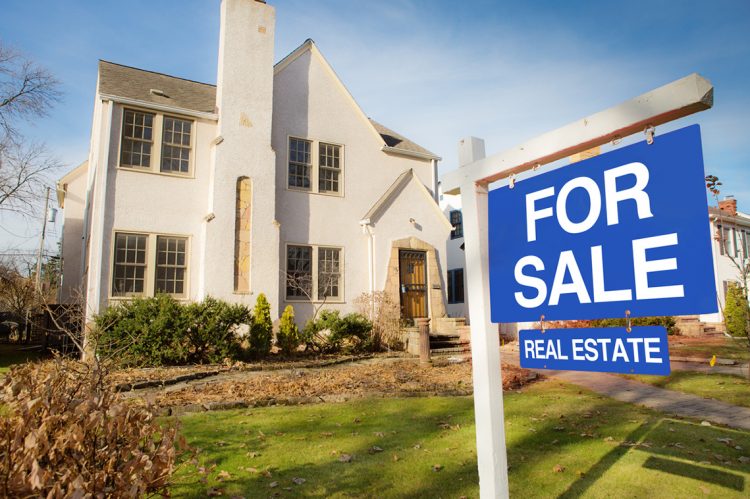I spent much of the last few months of 2022 traveling to a variety of events, and the reception the LGBTQ+ Real Estate Alliance and I have been afforded was incredible. Despite the challenges the LGBTQ+ community is facing in statehouses across the nation, and now in Congress, and such recent horrors like the Club Q shooting, I’ve noticed so many in real estate are working to welcome us.
Throughout the brand conferences, association meetings, NAR and RPAC programs, along with other diverse group events, I’ve spoken to so many who want to learn about our community – being curious from a desire to grow is amazing. Inevitably these discussions circled back to how and why buying a home is different for an LGBTQ+ person or couple. I figured since the subject kept coming up, this was a topic that I should dive into a little more publicly. Let’s begin.
The “dreaming and research” phase
We all seemingly start with an idea of what we want and need in our future home, and we all run into the same reality that those two things aren’t always in alignment. We use Zillow, Realtor.com, and other sites to learn about various communities, school districts, the types of homes that might be available in various price ranges. We review these sites with an eye toward the future and how we want to live. But for LGBTQ+ people, this early phase is often stunted because of fear of discrimination and a tangible concern over being welcomed and overall wellbeing.
While most choose a town and neighborhood they are interested in based on amenities and school systems, an LGBTQ+ buyer will usually layer on even more research. We want to know if the state and community we are interested in is supportive of the LGBTQ+ community. We often turn to sites like LGBTmap.org and HRC’s Equality Index.
Along with looking for good schools and amenities, we want to make certain our children will be welcomed in school districts. This is where the more than 300 anti-LGBTQ+ bills coming up in 23 different states cause great concern including Florida’s “Don’t Say Gay” law. No one would want to put themselves in direct danger or harm, be it physical, emotional, or mental, because of who their moms, dads, parents, or kids are.
As for the neighborhood, this is where it gets even more challenging. How do we know if our neighbors and those living near us will welcome an LGBTQ+ person or couple? How will they react to and treat our kids? What if we decide to have kids after we move in? If we have the know-how, we might talk to local LGBTQ+ groups like PFLAG or other non-profit organizations to get a handle on the community and how other LGBTQ+ people have thrived locally. We almost definitely will turn to social media and try to investigate the neighborhood.
Finances
All buyers need to understand the lending process and the difference between renting and owning along with saving for a down payment, and downpayment requirements. But LGBTQ+ people face unique financial challenges starting with the accumulation of wealth.
Our most recent LGBTQ+ Real Estate Report found that 61.9% of LGBTQ+ Real Estate Alliance members believe a lack of down payment funds is the leading barrier to entry for LGBTQ+ homeownership. Additionally, 21.5% cited short-term financial concerns as a barrier of entry.
Discrimination throughout our lives, all the way back to high school and college, may diminish our earning power. Our inaugural LGBTQ+ Real Estate Housing Report found that 40% of Alliance members reported that bullying, discrimination, or the fear of discrimination in high school and/or college impacted their earning potential early in their careers.
A National LGBTQ Workers Center study also found that 47% of LGBTQ+ employees report that being “out” at work could damage their career. Many in the LGBTQ+ community are rightfully concerned with job security and longevity of a career.
And a new report by the Employee Benefit Research Institute (EBRI) found that LGBTQ+ employees earn on average 10% less than their straight counterparts make. Additionally, when it comes to benefits, LGBTQ+ folks are not equal. While 81% of all employees qualify for health insurance, only 73% of LGBTQ+ employees do. And no matter what the pay level, LGBTQ+ employees are less likely to be very satisfied with their job. In fact, for those making $75,000-or-more, only 55% of LGBTQ+ employees are satisfied compared to 71% of all employees.
If we aren’t compensated as well, and our confidence levels in our careers is lower because of outside factors, the ability to acquire wealth is harder.
And, once we get to the loan stage of homebuying, our members reported that LGBTQ+ buyers being quoted higher rates and/or worse terms than heterosexuals was the fifth most cited instance of housing discrimination. And without civil rights protections in 29 states in America for LGBTQ+ people, this is the rule, not the exception.
Hiring an agent
Everyone wants the best agent with incredible experience, negotiation, and communication skills.
Now, imagine the LGBTQ+ buyer who enters the agent search wondering which agents will understand their concerns in choosing a community, neighborhood, or home? What if an agent doesn’t want to work with an LGBTQ+ client? Or the agent being even somewhat uncomfortable? These concerns are real. Remember, our most recent LGBTQ+ Housing Report found that 20.8% of Alliance members indicated that real estate agents are the leading culprit of housing discrimination, even if most of it is unconscious bias.
Most LGBTQ+ clients feel more comfortable hiring an LGBTQ+ agent or ally who understands what they are going through. That is why we are so excited about the coming launch of LGBTQplusHomes.com, a consumer site that will provide incredible market information along with easy access to our members.
We also continue to run our Alliance Certified Ally course to educate real estate professionals about the LGBTQ+ community, our challenges, and how best to work with us.
Choosing a home
Looking at homes requires careful inspection, including looking around the neighborhoods, meeting potential neighbors, and doing other due diligence. We all hope to get a feel for the community while imagining living there.
What differs for an LGBTQ+ buyer? First, many of us, especially in our younger years gravitate towards known “safe communities,” usually urban centers where there is safety in numbers and an abundance of diverse, welcoming businesses, restaurants, and nightlife. Like anyone else, we want to meet people. We want to date, and we want friendships. So, like any other population density, we tend to flock to where we find those who are part of our community. We get comfortable in these communities. But, let’s face it, many of these cities have some of the highest home prices and most inflated standards of living in the country.
And at some point, whether it be marriage, a new job or promotion, or a growing family, we might consider homeownership in a suburb or more affordable area. We are leaving the “safe zone,” and therefore may have trepidation. It is hard to know how welcomed we will be by potential new neighbors simply by looking at the cars on the street or the neatness of the landscaping. We wonder how restaurants, bars, stores, and other establishments will welcome us. Pride flags, “all are welcome” lawn signs, and even progressive social movement signs are all huge symbols of relief when we’re looking.
With about 40% of Alliance members citing that LGBTQ+ buyers are moving to communities not traditionally known as LGBTQ+ havens, this concern is valid.
Contracts and negotiations
Imagine having the funds, choosing a great agent, liking a home, making an offer, and it gets rejected simply because the potential buyer is LGBTQ+. The last thing we want to hear is that we were denied being sold a home solely due to our sexual orientation or gender identity. It is incredibly disheartening, to say the least.
This happens more than you think. National Fair Housing Alliance just reported that housing discrimination has skyrocketed by 8.7% to 31,216 cases. Most were against those with a disability, followed by race and then sexual orientation and gender identity.
This is by no means an exhaustive list of examples, but hopefully, you can clearly see some key differences between how LGBTQ+ buyers go through the home-buying process compared to heterosexual, cisgender buyers. One of our key missions at The Alliance is to educate as many real estate professionals as we possibly can. We believe that the more in our industry who are supportive and welcoming, the more potential barriers to homeownership can be removed. This starts with hearts and minds. We welcome you take our certification course and join The Alliance.












